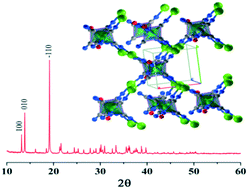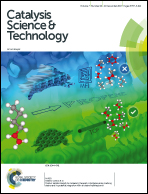Optical and electronic configuration of a novel semiconductor-silver nitroprusside for enhanced electrocatalytic and photocatalytic performance†
Abstract
This study presents a novel n-type semiconductor material, silver nitroprusside, possessing a π-acceptor ligand bridged octahedral geometry with a poor spin state metal ligand charge transfer effect. The electronic construction and optical transition properties of the excited state were predicted from the first-principles calculations and configuration interaction singles (CIS) calculations, respectively, so as to reinforce the experimental result. The material was found to be a low band gap (1.65 eV) semiconductor photocatalytic material. Visible light photocatalytic test was conducted to study the degradation of an antibiotic drug, chloramphenicol. Linear sweep voltammetry also displayed a very good electrocatalytic oxygen evolution reaction (OER) performance with a measured current density of 60 mA cm−2 at an overpotential of 370 mV, which is beneficial for photocatalysis. Our exploration can help improve semiconductor based coordination complexes for application in photocatalysis and electro-catalysis. The main novelty of this research study lies in recommending the incorporation of conjugated π ligands in transition metal complexes as a methodology to fabricate efficient photoelectrodes or photocatalysts.



 Please wait while we load your content...
Please wait while we load your content...